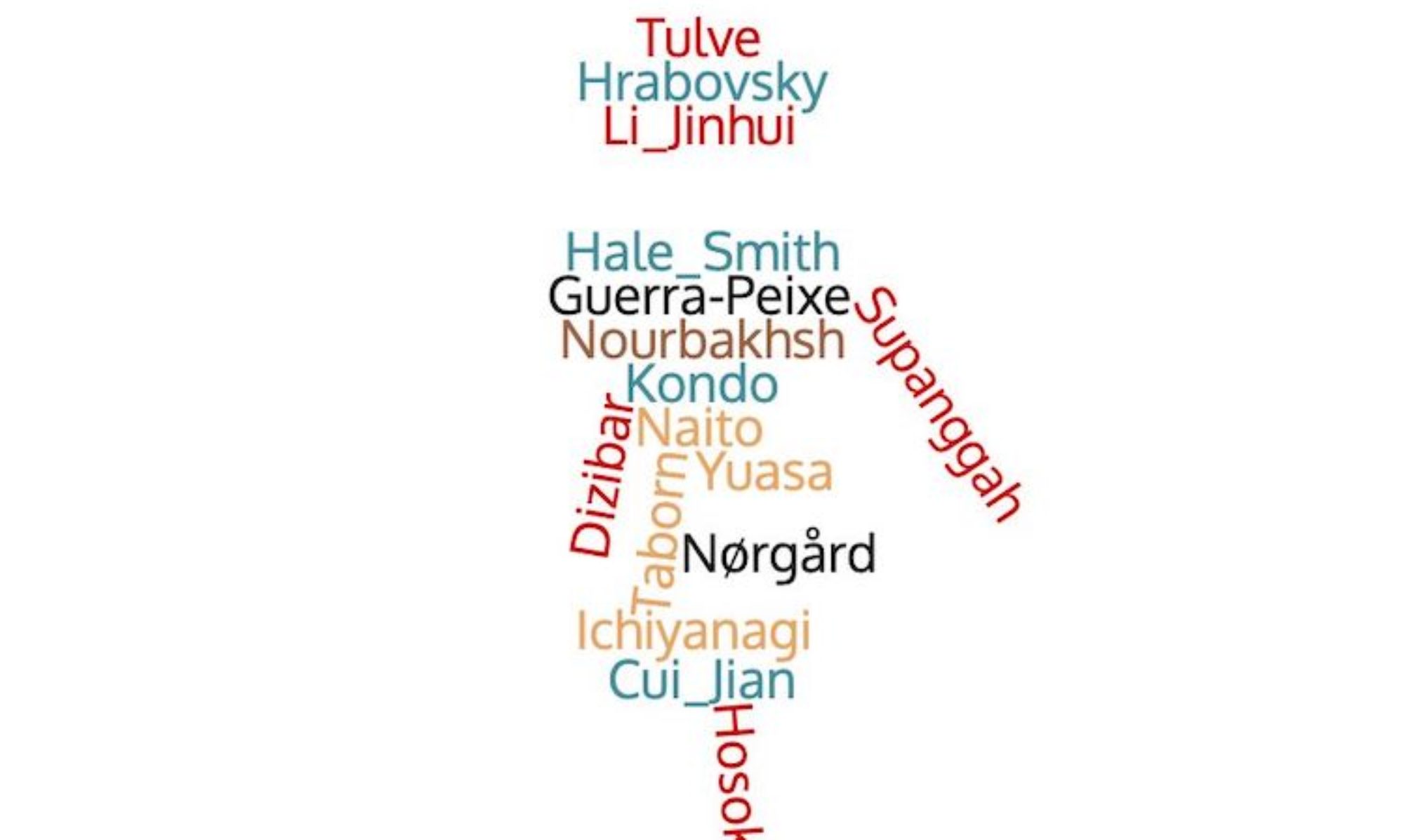By Mao Mengdan and Min Lingkang
This post is part of a series on 100 modern conservatory-trained Chinese composers from 1912 onwards who wrote symphonic, ensemble, and solo instrumental music using Western instruments, as well as choral and solo vocal music, adopting Western tonality or avant-garde techniques. They are regarded as key historical figures in and drivers of modern Chinese music history.
Jiang Wenye (June 11, 1910 – October 24, 1983), originally named Jiang Wenbin, was a Taiwanese composer of Hakka descent, born in Tamsui District, Taipei (formerly part of Tamsui County, Taiwan). He created a wide range of music works, including 12 large orchestral pieces, 1 piano concerto, 5 dance dramas, 8 chamber music pieces, 12 piano collections, 12 song collections, 4 religious music works, several choral pieces, and arranged over 100 Taiwanese folk songs.
Jiang’s musical journey began in 1918 when he enrolled in the Xiamen Xuying Academy. At the age of 13, he moved to Tokyo, Japan, to study at an elementary school, and later attended Ueda Middle School in Nagano Prefecture, where he developed a keen interest in music. After graduating from middle school, he followed his father’s wish to study electrical engineering at Musashino Koto Kogyo Gakko (now Tokyo City University), but his love for music led him to take extracurricular lessons at the Tokyo Music School, studying vocal music and music theory under Kunihiro Hashimoto.
In 1932, after graduating, Jiang won a vocal music competition organized by the Tokyo Times, a pivotal event that steered him towards a career in music. The following year, he won another award and was recognized by the opera conductor Yoshie Fujiwara, who hired him as a baritone for his opera troupe. In 1933, Jiang began to focus on composition, studying under Japanese composer Kōsaku Yamada and joining the Japan Association of Emerging Composers.
In 1934, he composed his first work, the orchestral piece “Taiwanese Dance,” which won a silver medal at the 11th Olympic International Music Competition in 1936, making it one of the earliest Chinese works to receive international recognition. His success continued with four consecutive composition awards in Japanese national music competitions. Russian-American composer Alexander Tcherepnin published Jiang’s piano pieces “Little Sketches,” “Three Dances,” “Sixteen Pieces,” and the vocal piece “Taiwanese Mountain Compatriots Song.”
After 1935, Jiang’s reputation as a composer solidified in Japan with numerous awards and a steady stream of compositions. His “Symphony on a Bon Festival Theme” (named after the Japanese Buddhist festival to honor the dead) won third place in Japan’s third national music competition. In the autumn of 1938, at the invitation of music educator Ke Zheng, Jiang moved to Beiping (now Beijing) to teach composition and vocal music at the National Beiping Normal University. During this time, he began studying Chinese classical music and composed the large orchestral piece “Confucian Temple Rites.”
During the Japanese occupation of Beiping, Jiang wrote songs that aligned with the propaganda needs of the Japanese. After returning to China, he immersed himself in researching ancient Chinese music and theory, and wrote extensively about his experiences in Beijing. Following the end of World War II, Jiang was arrested and imprisoned for his association with the pro-Japanese organization “Xinminhui” during the war. After his release, he briefly taught at a Hui Muslim middle school in the suburbs of Beiping and composed a significant number of Catholic hymns in Chinese modes.
From 1938 to 1945, Jiang produced many works with beautiful melodies and Chinese style, such as “Spring Dawn,” “Quiet Night Thoughts,” “Spring Night in Luocheng Hearing the Flute,” and “Fisherman’s Joy.” Throughout his career, Jiang was dedicated to music education, teaching composition, orchestration, and music analysis. His students were numerous and benefited from his meticulous teaching style.
“Taiwanese Dance” was composed in 1934 and is one of Jiang’s earliest and most famous works. The piece was inspired by the Taiwanese folk dance “Fengyang Flower Drum” and uses modern compositional techniques. The music is structured as a ternary form with a lively first section depicting the joyful dance, a slower and more lyrical middle section, and a final section that returns to the dance theme. The piece uses two pentatonic scales, one without and one with a semitone, and is a fusion of traditional Taiwanese and Japanese modes.
You can watch a performance of Jiang Wenye’s “Taiwanese Dance” at the following link: https://www.bilibili.com/video/BV1Pa411m7hV?share_source=copy_web&vd_source=4681f0684a5c74dd125d397ca5882ba3
